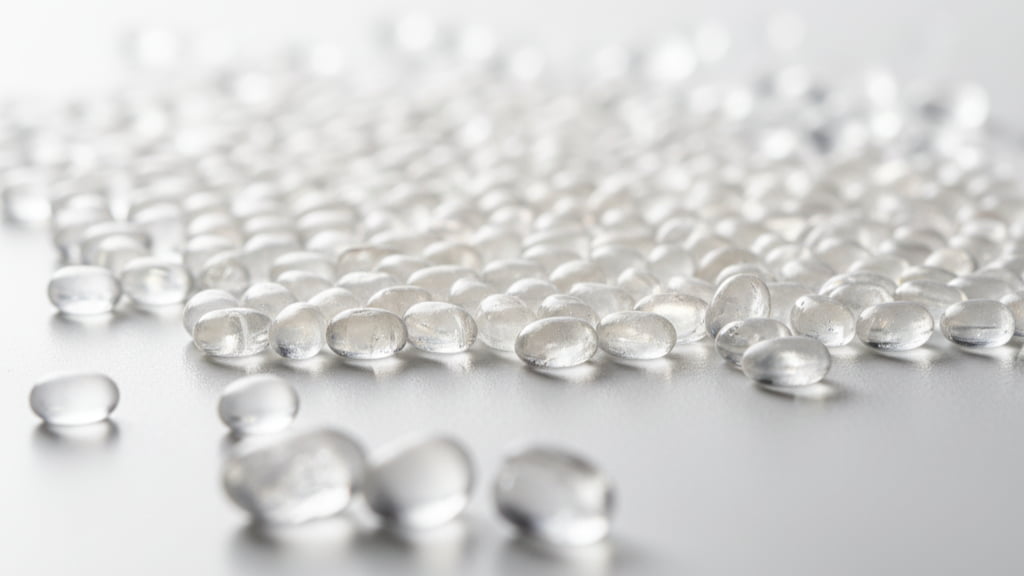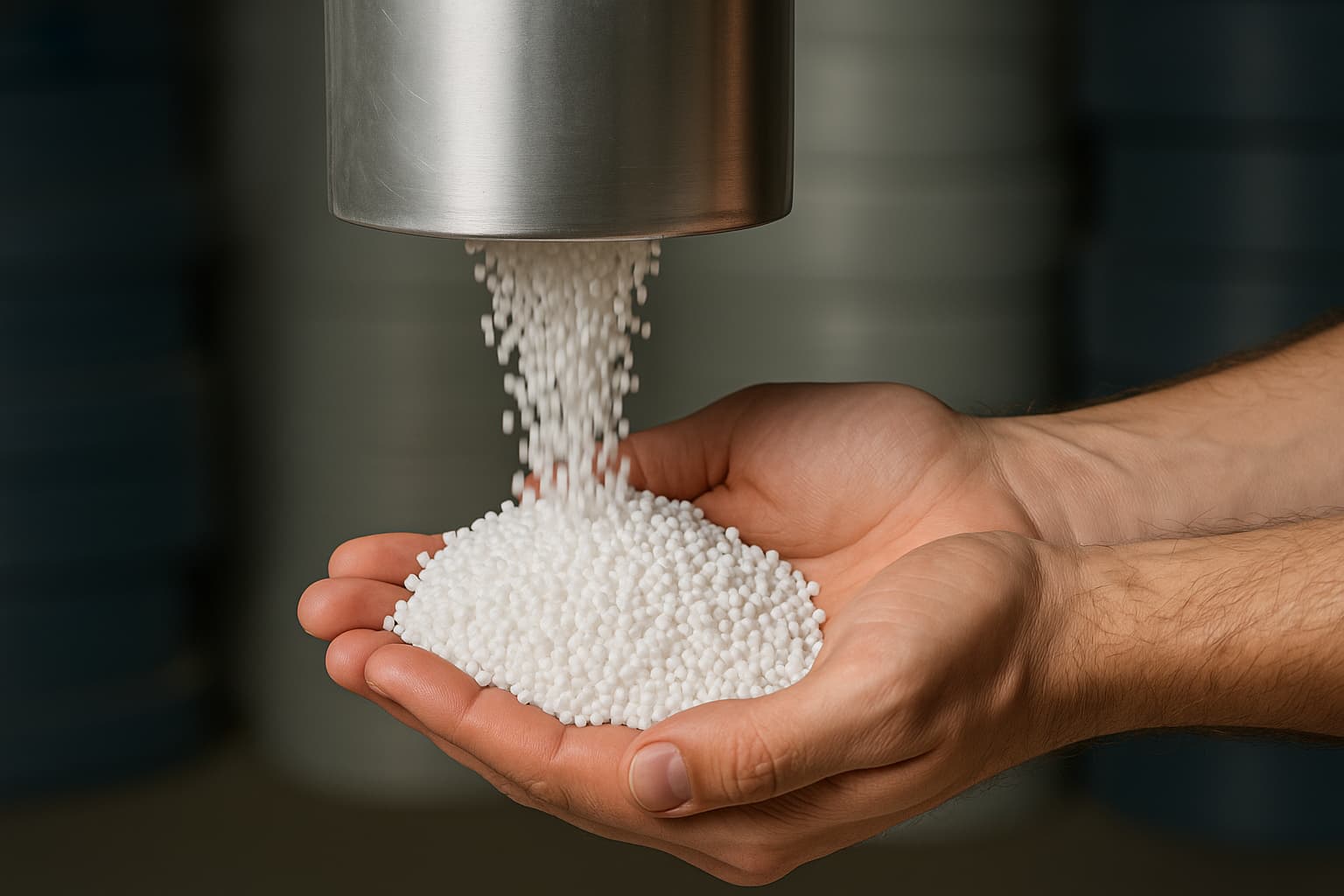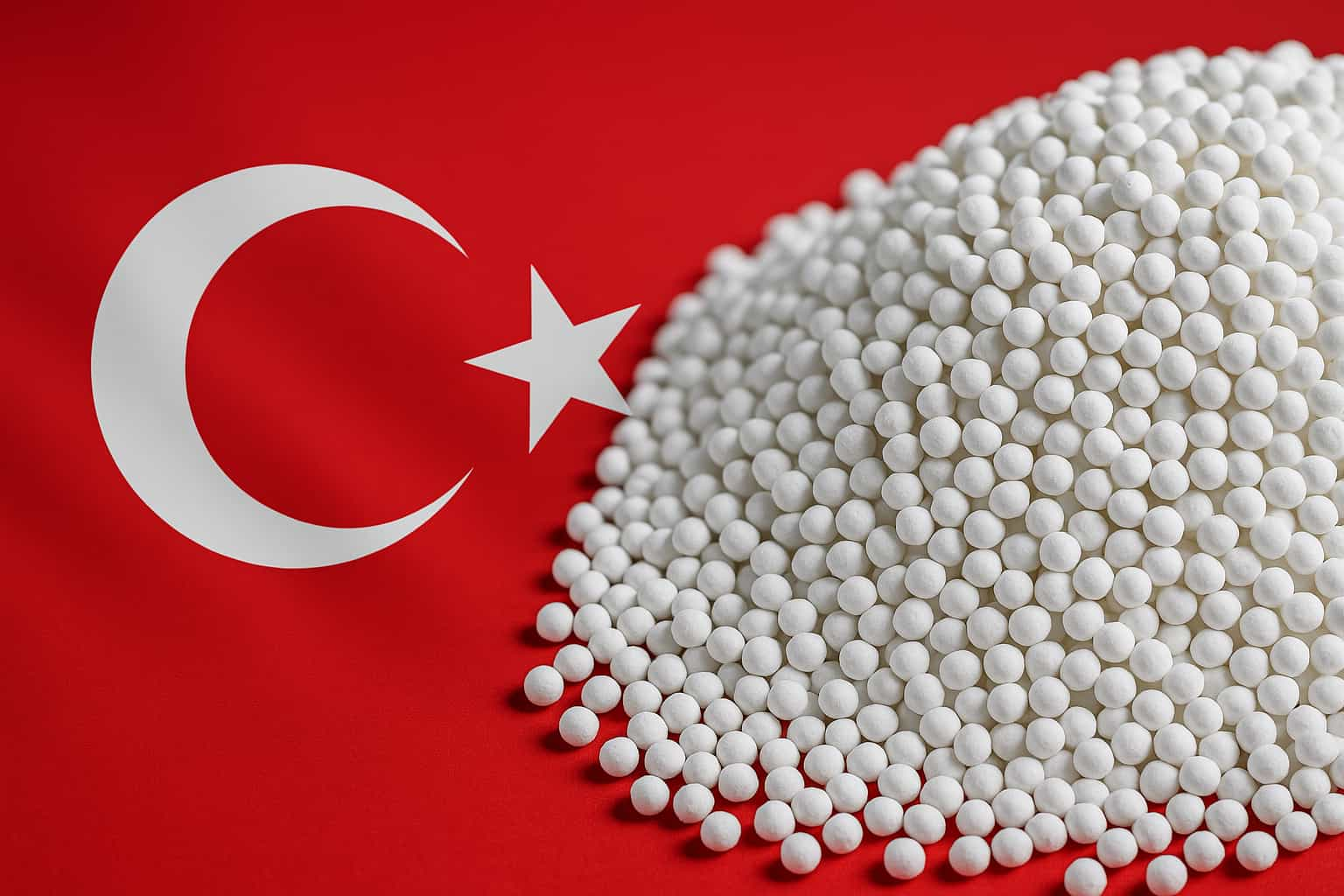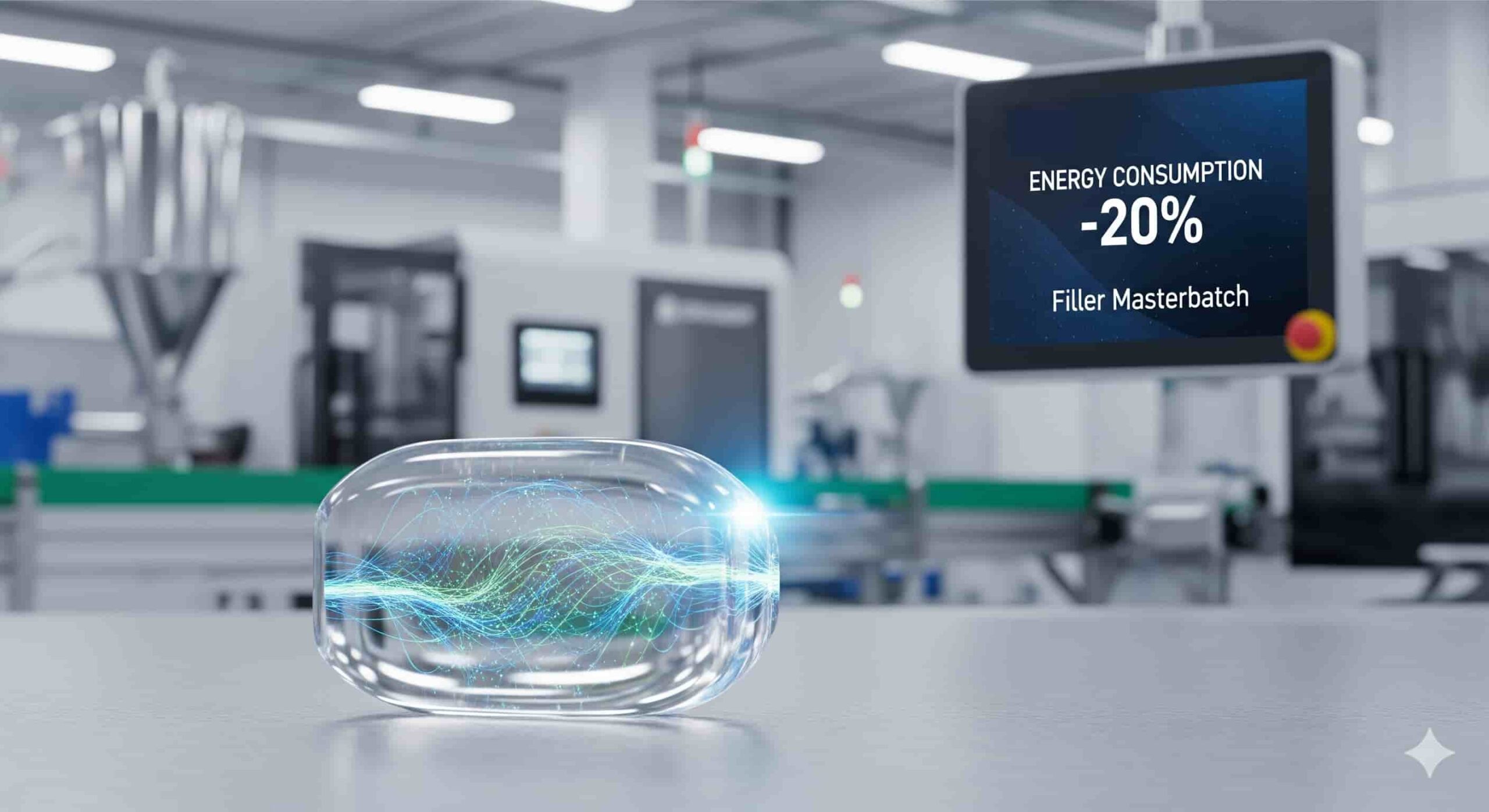Are you struggling to make your plastic products more eco-friendly without sacrificing performance or cost efficiency? Biodegradable masterbatch offers a smart solution—helping manufacturers reduce plastic waste, meet sustainability targets, and maintain product quality. In this article, we’ll break down what biodegradable masterbatch is, how it works, and why it’s becoming essential for modern plastic production in a world shifting toward circular, green manufacturing.
1. What is Biodegradable Masterbatch?
Biodegradable masterbatch is a concentrated blend of biodegradable polymers, fillers, and functional additives used to give plastic materials eco-friendly properties. Instead of relying solely on traditional, fossil-based plastics, manufacturers mix this masterbatch with bio-resins like PLA (polylactic acid), PBAT, or PBS to make products that can naturally break down under composting conditions.
A biodegradable masterbatch helps bridge the gap between performance and sustainability. It lets manufacturers produce strong, durable, and affordable plastic products that still respect the environment—a vital step toward a circular, low-waste future.
2. How Biodegradable Masterbatches Work?
So, how does biodegradable masterbatch actually work? The secret lies in its unique blend of materials that trigger natural decomposition once the product reaches the right environment.
Each masterbatch starts with a biopolymer carrier—usually PLA, PBAT, or PBS. These carriers are derived from renewable sources such as corn starch, sugarcane, or vegetable oils. They provide the base that holds other ingredients together and ensures smooth mixing with regular plastic during processing.
Then come the functional additives, pigments, and fillers.
- Materials like calcium carbonate (CaCO₃), talc are added to improve strength, flexibility, and processing efficiency—this type is known as biodegradable filler masterbatch (or bio filler).
- Pigments are added to create color, forming what’s called a biodegradable color masterbatch.
- Meanwhile, functional additives enhance specific properties, often referred to as a biodegradable additive masterbatch.
At the same time, they help create a structure that supports biodegradation. When the finished plastic product is exposed to composting conditions—heat, moisture, and microorganisms—these components break down into carbon dioxide, water, and organic matter.
Another key point is compatibility. Biodegradable masterbatches are designed to work with existing production lines.
Manufacturers can use them in standard extrusion, injection molding, or film blowing processes without major equipment changes. That makes the switch to sustainable materials much easier and cost-effective.
To prove their environmental performance, many products carry certifications like OK Compost, EN 13432, or ASTM D6400. These standards confirm that the plastic can fully decompose under industrial composting conditions.
3. Key Benefits of Using Biodegradable Masterbatch
Switching to biodegradable masterbatch isn’t just about being “green.” It’s also about working smarter and staying ahead of changing market demands. Here are the key benefits that make it worth considering for modern manufacturers.
Environmental sustainability
The most obvious benefit is reducing plastic waste. Biodegradable masterbatches help plastics break down naturally after use, instead of staying in landfills or oceans for decades.
When combined with compostable resins like PLA or PBAT, they support a circular economy—where materials return safely to nature.
Cost efficiency
Contrary to what many assume, biodegradable masterbatch can lower production costs.
By using fillers such as calcium carbonate or starch, manufacturers reduce the amount of expensive biopolymer resin needed in each product. That means savings on raw material costs without losing performance.
Improved processing performance
These masterbatches can make production smoother. They improve melt flow, reduce energy consumption, and shorten cycle times in extrusion or molding.
The result is better efficiency and higher output on existing machines.
Strong and consistent product quality
Biodegradable doesn’t mean fragile.
With the right formulation, products maintain their strength, flexibility, and visual appearance—just like conventional plastics. This makes them suitable for a wide range of applications, from packaging films to molded containers.
Enhanced brand image and compliance
Using biodegradable materials helps companies meet sustainability targets and comply with new environmental regulations. It also boosts brand reputation among eco-conscious consumers and partners who value greener solutions.
4. Common Types and Formulations of Biodegradable Masterbatch
Let’s look at the most common types of biodegradable masterbatch used in the plastic industry today.
| Type | Core Ingredients | Main Use | Cost Impact | Degradation Speed | Example Product |
|---|---|---|---|---|---|
| Bio Filler | PLA/PBAT + CaCO₃/starch | Bags, mulch film | ↓ 20–35 % | 90 days (industrial) | BioMates (EuP Egypt) |
| Color | PLA + compostable pigments | Packaging | Neutral | 90–180 days | Colormates-Bio (FKuR) |
| Additive | UV-block, anti-slip | Long-shelf-life film | ↑ 5–10 % | 90–120 days | BioAdd-UV (BASF ecovio®) |
| Custom PHA | PHA + talc | Cutlery | ↑ 15 % | 12 months (home) |
1. Biodegradable filler masterbatch (Bio Filler)
Bio filler is one of the most widely used forms. It’s made by blending biodegradable polymers such as PLA or PBAT with natural fillers like calcium carbonate, talc, or starch. The result is a material that reduces plastic consumption, improves film stiffness, and helps control costs.
Bio filler masterbatch is often used in products like shopping bags, garbage bags, and agricultural films.

2. Biodegradable color masterbatch
Color is key in product design. Biodegradable color masterbatch adds pigments to bioplastic materials without affecting their ability to degrade.
These pigments are carefully selected to remain safe and compostable under standard conditions. Manufacturers use this type to create attractive, eco-friendly packaging and consumer goods.
3. Biodegradable additive masterbatch
Biodegradable additive masterbatch focuses on functionality rather than appearance. It contains additives that improve properties like UV resistance, anti-blocking, anti-slip, or thermal stability. Some even accelerate the biodegradation process under specific conditions.
These additive masterbatch are ideal for packaging films or molded products that require longer shelf life but faster decomposition after disposal.
4. Custom formulations
Many suppliers now offer tailor-made biodegradable masterbatches. These blends can adjust filler loading, carrier resin, or color intensity depending on the final application. For example, flexible films may need higher PBAT content, while rigid packaging might work better with PLA-based systems.
5. Applications & Use Cases
Biodegradable masterbatch is now used across a wide range of plastic products — especially those designed for short-term use. Here are the main product categories where it’s making the biggest impact:
- Flexible packaging films
Biodegradable masterbatch is widely used in making shopping bags, garbage bags, food packaging, and stretch films. By blending it with biodegradable resins, manufacturers can produce flexible films that decompose naturally after disposal, helping reduce landfill waste. - Injection-molded products
Items like disposable cutlery, food containers, and cups can also use biodegradable masterbatch. It ensures these single-use products stay durable during use but can still break down in composting conditions afterward. This helps brands meet eco-label requirements and appeal to sustainability-conscious consumers. - Agricultural films
In agriculture, biodegradable masterbatch is used in mulch films that cover soil and protect crops. Traditional films must be collected and discarded after harvest, but biodegradable ones can break down in the field. - Rigid packaging and household products
Bottles, cosmetic containers, and other rigid items can incorporate biodegradable compounds while maintaining strength and aesthetics. These applications are growing fast, especially as brands look to replace fossil-based plastics with compostable alternatives. - Industrial and specialty applications
Some companies use biodegradable masterbatch in textile fibers, coating layers, or even 3D printing materials. These innovations show how adaptable the material can be across different production methods.
6. Choosing the Right Biodegradable Masterbatch: Key Factors to Consider
Selecting the right biodegradable masterbatch can make or break your production results. The right choice depends on your product type, processing method, and sustainability goals. Here are the main factors to look at before making a decision.
- Compatibility with base resin
Not all masterbatches work with every polymer. Make sure the masterbatch carrier matches your base material—such as PLA, PBAT, or PBS—to ensure good dispersion and consistent product quality. - Desired function
Ask yourself what you want to achieve. Do you need color? Then go for a biodegradable color masterbatch. Need cost reduction or stiffness? Choose a bio filler masterbatch. Looking to enhance properties like UV protection or flexibility? Then a biodegradable additive masterbatch is the right fit. - Certification and standards
Always check if the product meets international compostability standards like EN 13432, ASTM D6400, or OK Compost. Certified materials make it easier to comply with regulations and gain consumer trust. - Processing performance
Consider how the masterbatch behaves in your production line. A good biodegradable masterbatch should blend easily, maintain stable melt flow, and not cause issues like uneven color or surface defects. - Cost and supplier reliability
Price matters, but consistency matters more. Choose suppliers with proven experience, reliable delivery, and transparent test data. That ensures long-term stability and predictable results in mass production.
7. Future Trends & Innovations in Biodegradable Masterbatch
The biodegradable masterbatch industry is evolving fast. As global demand for sustainable materials grows, new technologies are reshaping how bioplastics are designed, produced, and used. Here are some of the most exciting trends shaping the future.
- Advanced biopolymer blends
Manufacturers are developing smarter combinations of PLA, PBAT, PBS, and PHA to achieve faster biodegradation and better strength. These new blends make bioplastics more versatile and suitable for both flexible and rigid packaging. - Bio-based fillers and additives
The next generation of fillers comes from renewable or organic sources—such as modified starch, bamboo powder, or plant fibers. They lower carbon footprints while improving mechanical performance and compostability. - Functional and smart additives
Innovators are adding features like UV resistance, anti-fog, or antibacterial protection to biodegradable masterbatches. This helps eco-friendly products perform as well as—or even better than—traditional plastics. - Integration with recycled materials
Future formulations aim to combine biodegradability with recyclability. Hybrid materials that can either biodegrade or be reprocessed will play a big role in a circular economy. - Global standardization and certifications
More countries are introducing clearer guidelines for compostable and biodegradable plastics. This push toward consistent standards (like EN 13432 or ASTM D6400) will help manufacturers build trust and access new markets.
8. Sustainability & Environmental Impact
By switching to biodegradable masterbatch, manufacturers help reduce the volume of plastic waste that ends up in landfills or oceans. These materials break down naturally into carbon dioxide, water, and organic matter, leaving no toxic residue behind. That supports cleaner soil, water, and air — essential for a circular economy.
From a business perspective, it also aligns with ESG (Environmental, Social, and Governance) goals. Companies that adopt biodegradable materials show a real commitment to environmental responsibility. This not only improves brand image but can also attract eco-conscious partners and customers.
When assessed through a life cycle lens, biodegradable masterbatch can lower carbon emissions, reduce fossil resource use, and promote responsible waste management. Simply put, it’s a small step in production that leads to a big step toward sustainability.
9. EuP Egypt – Pioneering Sustainable Plastic Solutions
At the forefront of this green transformation stands EuP Egypt— a leading manufacturer of sustainable masterbatch and bioplastic materials.
With a world-class factory spanning over 34,000 m² and a production capacity of 300,000 tons per year, EuP Egypt serves as a key hub connecting Africa, the Middle East, and Europe in the journey toward circular manufacturing.

EuP Egypt proudly offers two flagship biodegradable products designed to meet the growing demand for eco-friendly materials:
- BioMates (Bio Filler Masterbatch): a starch-based, biodegradable filler masterbatch that helps manufacturers reduce plastic consumption and production costs without compromising product performance. Certified by OK Compost INDUSTRIAL, BioMates combines calcium carbonate (CaCO₃), PLA, and PBAT to deliver strength, rigidity, and compostability — ideal for films, bags, and injection products.
- BioNext (Bioplastic Compound): a next-generation material engineered from PHA, PLA, and renewable sources, offering complete biodegradability within 12 months under industrial composting conditions. BioNext is the perfect solution for packaging and single-use items that demand both durability and true environmental responsibility.
Backed by EuP Group’s 17 years of expertise and a presence in 95+ countries, EuP Egypt continues to lead the transition toward sustainable plastics — helping global manufacturers combine high performance with a lower carbon footprint.
🌿 Contact EuP Egypt today to explore innovative biodegradable solutions tailored to your business needs.
10. Conclusion
Biodegradable masterbatch offers a clear path toward greener, more responsible plastic production. It combines functionality, cost savings, and environmental benefits — all in one smart solution.
Here’s what to remember:
- It’s made from biodegradable polymers and eco-safe additives.
- It helps reduce plastic waste and carbon footprint.
- It works with standard processing equipment.
- It supports certifications like EN 13432, ASTM D6400, and OK Compost.
For manufacturers, choosing biodegradable masterbatch means staying ahead in an industry that’s rapidly moving toward sustainability. It’s not just about replacing plastic — it’s about rethinking how we make and use it.
In the end, adopting biodegradable masterbatch is more than a trend. It’s a commitment to performance, efficiency, and a cleaner future.





